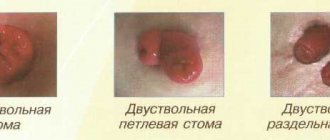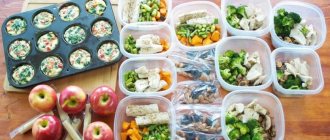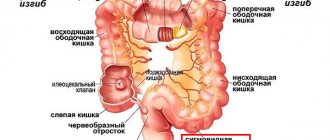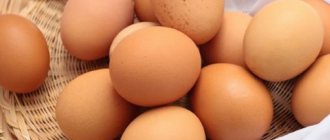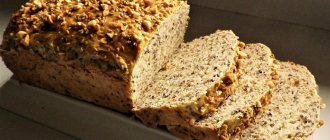Oncologists at the Yusupov Hospital use modern diagnostic methods using equipment from leading global companies to diagnose malignant neoplasms. It is not always possible to perform radical surgery after a diagnosis has been made. In this case, surgeons create a stoma in the small or large intestine. After the stoma is formed, the stool is collected in a colostomy bag.
Patients at the Yusupov Hospital are provided with dietary nutrition. The chefs prepare special dishes that have excellent taste. Patients with an ileostomy should avoid foods rich in fiber for 4 to 6 weeks after surgery. They are subsequently added in small quantities. If a person cannot tolerate such food, after two or three attempts it is excluded from the diet.
During the day, the patient needs to consume at least 1.5-2 liters of purified still water, separately from solid food. An ileostomy results in the shutdown of colon function. The small intestine only partially compensates for the ability to absorb water and mineral salts. After the formation of a stoma, the ability to accumulate and regularly release intestinal contents is completely lost. By the end of the second month after surgery, the small intestine adapts so much that in most patients the previous diet and pattern of nutrition are restored.
Nutritionists at the Yusupov Hospital recommend that patients eat small portions at regular intervals. Limiting the amount of food you eat or fasting leads to diarrhea and excessive gas production. To reduce the amount of discharge from your stoma at night, you should eat a small, early dinner.
Recovery in the postoperative period
The rehabilitation period after surgery to close a colostomy is usually several months. And all possible complications often arise when at this moment the patient does not follow all the doctor’s recommendations, or are not followed in full.
When the recovery and rehabilitation period ends is decided only by the attending physician based on diagnostic studies of the intestines.
The most important thing in the postoperative period is to follow a diet and maintain a healthy lifestyle with a strict daily routine.
The diet program during the recovery period looks something like this:
- 3-5 days after surgery only drips with the necessary medications;
- from the fifth to the twelfth day you can only eat liquid porridge with added sugar;
- from the twelfth to the twenty-first day, it is allowed to gradually introduce other foods into the diet, with the exception of raw fruits and vegetables;
- Only after three months have passed since the operation can you start eating apple peels, corn, raw cabbage, legumes, fried and spicy foods.
Characteristics of digestive characteristics in the intestinal gastrointestinal tract
Complex digestive processes occur in the small intestine.
The main stage of digestion occurs in the small intestine. First, a bolus of food enters the duodenum.
It is already prepared for favorable digestion: gastric juice containing hydrochloric acid and the enzyme pepsin have been added to it.
In this department, food is broken down into simple compounds of fats, complex beans, and carbohydrates. The pancreas participates in this process by supplying important enzymes to the small intestine.
Authorized Products
After the stoma is closed, meals are organized within Table No. 4B . The length of stay on it depends on the state of health and is agreed with the doctor - usually 1.5-2 months. After this, the diet expands and includes non-processed dishes recommended by Therapeutic Diet No. 4B . This diet option is varied and complete, so it can be used constantly. This nutritional option is most suitable for patients with constipation because it contains more dietary fiber.
- Mashed and then unmashed porridges (buckwheat, oatmeal, rice - avoid if you have constipation), which can be cooked in water, with the addition of milk or broth.
- Soups with weak broth. Cereals and vegetables approved by the doctor are first wiped, and then simply kneaded and chopped. Vegetables can include potatoes, pumpkin, zucchini, carrots and, if tolerated, cauliflower. To increase calorie content and add flavor, boiled minced meat, meatballs, tender quenelles or egg flakes are added to first courses.
- Boiled or steamed dishes from minced meat and fish - pates, soufflés, steamed cutlets, meatballs, quenelles.
- Dried wheat bread, stale biscuits, low-fat cookies. The timing of their introduction into the diet is determined by the doctor.
- Boiled and pureed vegetables, you can eat vegetable puree, steamed vegetable cutlets with the addition of semolina. Gradually switch to eating chopped vegetables.
- Fermented milk products, milk, low-fat sour cream and cream are consumed if tolerated. It is better to use milk only in dishes. Low-fat cottage cheese is allowed and should be present in the diet daily. To give it a liquid consistency, add kefir or milk.
- Among the drinks, patients are allowed rosehip infusion, cocoa in water (a little milk is fine), weak tea, juices diluted with water (apple, pumpkin, cherry, strawberry, carrot), rosehip decoction. The consumption of juices is approached carefully and strictly individually.
Table of permitted products
| Proteins, g | Fats, g | Carbohydrates, g | Calories, kcal | |
Vegetables and greens | ||||
| zucchini | 0,6 | 0,3 | 4,6 | 24 |
| cabbage | 1,8 | 0,1 | 4,7 | 27 |
| cauliflower | 2,5 | 0,3 | 5,4 | 30 |
| potato | 2,0 | 0,4 | 18,1 | 80 |
| carrot | 1,3 | 0,1 | 6,9 | 32 |
| parsley | 3,7 | 0,4 | 7,6 | 47 |
| beet | 1,5 | 0,1 | 8,8 | 40 |
| dill | 2,5 | 0,5 | 6,3 | 38 |
| green beans | 2,8 | 0,4 | 8,4 | 47 |
Fruits | ||||
| quince | 0,6 | 0,5 | 9,8 | 40 |
| oranges | 0,9 | 0,2 | 8,1 | 36 |
| pomegranate | 0,9 | 0,0 | 13,9 | 52 |
| pears | 0,4 | 0,3 | 10,9 | 42 |
| dogwood | 1,0 | 0,0 | 10,5 | 44 |
| tangerines | 0,8 | 0,2 | 7,5 | 33 |
| apples | 0,4 | 0,4 | 9,8 | 47 |
Berries | ||||
| blueberry | 1,1 | 0,4 | 7,6 | 44 |
Nuts and dried fruits | ||||
| dried pears | 2,3 | 0,6 | 62,6 | 249 |
Cereals and porridges | ||||
| buckwheat (kernel) | 12,6 | 3,3 | 62,1 | 313 |
| semolina | 10,3 | 1,0 | 73,3 | 328 |
| oat groats | 12,3 | 6,1 | 59,5 | 342 |
| cereals | 11,9 | 7,2 | 69,3 | 366 |
| white rice | 6,7 | 0,7 | 78,9 | 344 |
Flour and pasta | ||||
| pasta | 10,4 | 1,1 | 69,7 | 337 |
| milk pasta | 11,5 | 2,9 | 67,1 | 345 |
| noodles | 12,0 | 3,7 | 60,1 | 322 |
Bakery products | ||||
| white bread crackers | 11,2 | 1,4 | 72,2 | 331 |
Confectionery | ||||
| jam | 0,3 | 0,2 | 63,0 | 263 |
| jam | 0,3 | 0,1 | 56,0 | 238 |
| marshmallows | 0,8 | 0,0 | 78,5 | 304 |
| fruit and berry marmalade | 0,4 | 0,0 | 76,6 | 293 |
| meringues | 2,6 | 20,8 | 60,5 | 440 |
| paste | 0,5 | 0,0 | 80,8 | 310 |
| Maria cookies | 8,7 | 8,8 | 70,9 | 400 |
Raw materials and seasonings | ||||
| dried bird cherry | 8,4 | 0,0 | 16,8 | 101 |
Dairy | ||||
| skim milk | 2,0 | 0,1 | 4,8 | 31 |
| sour cream | 2,8 | 20,0 | 3,2 | 206 |
| acidophilus | 2,8 | 3,2 | 3,8 | 57 |
Cheeses and cottage cheese | ||||
| cheese | 24,1 | 29,5 | 0,3 | 363 |
| cottage cheese 0.6% (low fat) | 18,0 | 0,6 | 1,8 | 88 |
Meat products | ||||
| boiled beef | 25,8 | 16,8 | 0,0 | 254 |
| boiled veal | 30,7 | 0,9 | 0,0 | 131 |
| rabbit | 21,0 | 8,0 | 0,0 | 156 |
Bird | ||||
| boiled chicken | 25,2 | 7,4 | 0,0 | 170 |
| turkey | 19,2 | 0,7 | 0,0 | 84 |
Fish and seafood | ||||
| Red caviar | 32,0 | 15,0 | 0,0 | 263 |
| black caviar | 28,0 | 9,7 | 0,0 | 203 |
Oils and fats | ||||
| butter | 0,5 | 82,5 | 0,8 | 748 |
Non-alcoholic drinks | ||||
| mineral water | 0,0 | 0,0 | 0,0 | — |
| green tea | 0,0 | 0,0 | 0,0 | — |
| black tea | 20,0 | 5,1 | 6,9 | 152 |
Juices and compotes | ||||
| Orange juice | 0,9 | 0,2 | 8,1 | 36 |
| Cherry juice | 0,7 | 0,0 | 10,2 | 47 |
| Strawberry juice | 0,6 | 0,4 | 7,0 | 31 |
| tangerine juice | 0,8 | 0,3 | 8,1 | 36 |
| carrot juice | 1,1 | 0,1 | 6,4 | 28 |
| tomato juice | 1,1 | 0,2 | 3,8 | 21 |
| pumpkin juice | 0,0 | 0,0 | 9,0 | 38 |
| Apple juice | 0,4 | 0,4 | 9,8 | 42 |
| * data is per 100 g of product | ||||
Indications
To form a colostomy, surgically, the open end of the colon is brought to the anterior abdominal wall and secured. During surgery, some of the diseased tissue is usually removed and the colon is removed to ensure normal bowel function. A colostomy is most often prescribed for rectal cancer. An unnatural anus is also performed in the following situations:
- intestinal injuries;
- congenital intestinal pathologies;
- Crohn's disease;
- Hirschsprung's disease;
- nonspecific ulcerative colitis;
- total polyposis of the colon.
A colostomy can be formed temporarily to subsequently restore normal movement of stool through the intestines, or remain with the patient for life. Colostomy after intestinal surgery requires global lifestyle changes. You should reconsider your diet, usual activities, and working conditions. In some cases, a colostomy for rectal cancer is a reason for disability. A colostomy can cause not only physical but also psychological inconvenience. Its presence can confuse a person, making him withdrawn and irritable.
Fully or partially limited products
- Strong secretion stimulants - strong and fatty broths, strong coffee.
- Products and dishes that increase bloating, putrefactive and fermentation processes - legumes, beer, vegetables with coarse fiber, rye and bran bread, fresh baked goods, kvass, sparkling water.
- Animal fats, margarine, vegetable oil are excluded for diarrhea.
- Spicy dishes, fatty meats, smoked meats, poultry, fatty sauces, canned meat and fish, mustard, horseradish, pepper, prepared meat products.
- Products with essential oils - garlic, onion, basil, celery, radish, radish, turnip.
- Coarse and difficult to digest cereals: millet, pearl barley, barley, corn, cooking fat, pork and beef, margarine, vegetable oil.
- The consumption of ice cream, chocolate, cakes, pastries, carbonated drinks, grape, apricot, citrus juices, and kvass is prohibited.
Table of prohibited products
| Proteins, g | Fats, g | Carbohydrates, g | Calories, kcal | |
Vegetables and greens | ||||
| vegetables legumes | 9,1 | 1,6 | 27,0 | 168 |
| swede | 1,2 | 0,1 | 7,7 | 37 |
| cucumbers | 0,8 | 0,1 | 2,8 | 15 |
| parsnip | 1,4 | 0,5 | 9,2 | 47 |
| parsley (root) | 1,5 | 0,6 | 10,1 | 49 |
| radish | 1,2 | 0,1 | 3,4 | 19 |
| white radish | 1,4 | 0,0 | 4,1 | 21 |
| turnip | 1,5 | 0,1 | 6,2 | 30 |
| celery | 0,9 | 0,1 | 2,1 | 12 |
| horseradish | 3,2 | 0,4 | 10,5 | 56 |
| garlic | 6,5 | 0,5 | 29,9 | 143 |
| spinach | 2,9 | 0,3 | 2,0 | 22 |
| sorrel | 1,5 | 0,3 | 2,9 | 19 |
Fruits | ||||
| bananas | 1,5 | 0,2 | 21,8 | 95 |
| melon | 0,6 | 0,3 | 7,4 | 33 |
Berries | ||||
| grape | 0,6 | 0,2 | 16,8 | 65 |
Mushrooms | ||||
| mushrooms | 3,5 | 2,0 | 2,5 | 30 |
Nuts and dried fruits | ||||
| dried fruits | 2,3 | 0,6 | 68,2 | 286 |
Cereals and porridges | ||||
| pearl barley | 9,3 | 1,1 | 73,7 | 320 |
| Wheat groats | 11,5 | 1,3 | 62,0 | 316 |
| millet cereal | 11,5 | 3,3 | 69,3 | 348 |
| barley grits | 10,4 | 1,3 | 66,3 | 324 |
Flour and pasta | ||||
| pasta | 10,4 | 1,1 | 69,7 | 337 |
Bakery products | ||||
| vysivkovy bread | 9,0 | 2,2 | 36,0 | 217 |
| Old Russian grain bread | 9,6 | 2,7 | 47,1 | 252 |
| Rye bread | 6,6 | 1,2 | 34,2 | 165 |
Confectionery | ||||
| candies | 4,3 | 19,8 | 67,5 | 453 |
| cookie | 7,5 | 11,8 | 74,9 | 417 |
| Kurabye cookies | 6,7 | 25,8 | 64,6 | 516 |
| butter cookies | 10,4 | 5,2 | 76,8 | 458 |
Ice cream | ||||
| ice cream | 3,7 | 6,9 | 22,1 | 189 |
Cakes | ||||
| cake | 4,4 | 23,4 | 45,2 | 407 |
Raw materials and seasonings | ||||
| seasonings | 7,0 | 1,9 | 26,0 | 149 |
| mustard | 5,7 | 6,4 | 22,0 | 162 |
Meat products | ||||
| pork | 16,0 | 21,6 | 0,0 | 259 |
Sausages | ||||
| dry-cured sausage | 24,1 | 38,3 | 1,0 | 455 |
Bird | ||||
| duck | 16,5 | 61,2 | 0,0 | 346 |
| goose | 16,1 | 33,3 | 0,0 | 364 |
Fish and seafood | ||||
| dried fish | 17,5 | 4,6 | 0,0 | 139 |
| smoked fish | 26,8 | 9,9 | 0,0 | 196 |
| canned fish | 17,5 | 2,0 | 0,0 | 88 |
Oils and fats | ||||
| vegetable oil | 0,0 | 99,0 | 0,0 | 899 |
| animal fat | 0,0 | 99,7 | 0,0 | 897 |
| cooking fat | 0,0 | 99,7 | 0,0 | 897 |
Non-alcoholic drinks | ||||
| bread kvass | 0,2 | 0,0 | 5,2 | 27 |
Juices and compotes | ||||
| apricot juice | 0,9 | 0,1 | 9,0 | 38 |
| grape juice | 0,3 | 0,0 | 14,0 | 54 |
| plum juice | 0,8 | 0,0 | 9,6 | 39 |
| * data is per 100 g of product | ||||
Contraindications and possible complications when closing a colostomy
It is possible to restore intestinal function to the previous level only in forty percent of all cases. After such an operation, some complications are possible, which affect both the area where the colostomy was previously placed and the functioning of the intestine, which has not functioned for a long period of time. The most severe complications arise after the elimination of a terminal single-barreled colostomy, since such a stoma is considered permanent and is placed for the rest of life.
When closing any type of colostomy, the following complications arise:
- prolapse of the rectum from the anus;
- intestinal perforation or rupture in the area of the operation;
- intestinal obstruction in the operated area associated with the accumulation of large amounts of feces;
- infectious-inflammatory or purulent processes in the place where the colostomy was previously located.
Colostomy has a certain number of contraindications:
- atrophy or damage to the sphincter muscles;
- removal of more than thirty percent of the intestine when applying a stoma, in addition to removal from the rectum;
- long course of chemotherapy for cancer;
- atrophy or more than fifty percent damage to the villous epithelium, since this may result in fecal stagnation, which often leads to sepsis.
Ostomy care
It is quite possible for the patient to take care of the stoma at home. The ostomy hole is not a wound and does not require sterile conditions or sterile gloves.
Before changing the colostomy bag, check that everything is at hand. You will need:
- paper napkins, soft fabric non-sterile napkin;
- plastic bag for used colostomy bag;
- mirror (if the patient provides care himself);
- scissors for a hole in the plate;
- template (stencil) for determining the size of the stoma;
- soap;
- if necessary - non-sterile wipes, barrier paste and skin treatment products.
It is rational to care for your stoma in the evening, before bed. The colostomy bag should not be changed immediately after eating, as intensive separation of intestinal contents may begin.
The procedure for treating a stoma and replacing a colostomy bag:
- After washing your hands with soap, remove the used colostomy bag into a prepared bag and close it.
- Clean the stoma with a damp soft cloth. Wash your hands again.
- After which you can begin to cleanse the skin. It is enough to blot it with a soft towel. And, if possible, leave to dry for a few minutes. If there is a need to cut hair with scissors. Do not use razors or depilatory products as they cause irritation.
- Place the stencil on the stoma and trace the desired diameter with a pen.
- Cut a hole of the proper size in the adhesive sheet.
- If ulcers, wounds, or bleeding occur on the skin or intestinal mucosa, you should see your doctor. Remaining glue from the plate can be carefully wiped off with a napkin or use a special hypoallergenic leather cleaner.
- If there are unevenness or changes in skin texture, apply barrier paste around the stoma for better sealing and stick on a retainer plate.
- The choice of position of the bag for collecting intestinal contents depends on the patient’s activity - if he is constantly in bed, the bag should be oriented across the abdomen. In all other cases, the bottom of the bag should point down.
Important! To treat the skin, you cannot use products based on alcohol, ether, or aggressive antiseptic solutions.
An easy-to-care stoma is one that protrudes above the surface of the skin. In this case, it is easy to achieve tight coverage of the intestinal stump and a tight connection.
If the stoma is located in a recess and retracted, then so-called correctors are used - convex plates. They cover the intestinal stump using a tight flange. The concave shape of the products makes it possible to conveniently attach colostomy bags. For greater reliability, the plates are attached to the torso using a wide elastic band.
Photo: Convex plate, surface adjacent to the skin
What can you eat
After a colostomy is performed, the doctor develops a diet for the patient, which includes certain foods. Over time, you can expand it by adding food that is not capable of causing harm to the body.
What can you eat during a colostomy, list of products and their characteristics:
| Blueberries, rice, baked apples, berry and fruit jelly: | will help thicken the contents of the small intestine. |
| Nuts, kvass, potatoes, milk: | consumed in limited quantities, since these products can cause fermentation in the stomach. |
| Cheese, eggs, onions, fish, beans and other legumes: | can impart a putrid odor to the intestinal contents. |
| Steamed meat, fruits, vegetables (raw and boiled, pitted and peeled), fresh bread: | do not have a serious effect on the process of bowel movement. |
| Cocoa, strong tea, white crackers, cottage cheese with nivkhka fat concentration, cereals, warm soups: | They have an astringent effect and are well absorbed by the body. |
It is not forbidden to eat apples, muesli, fermented milk products, steamed vegetables, poultry, fish, animal meat - all this will not cause harm to the body. Unlike fatty, fried foods.
Patients are allowed to cook porridge, puree soups, and can diversify the diet with various vegetable salads and dried fruits.
Much depends on a person’s individual preferences, because each body reacts to foods differently. This aspect is taken into account when creating a menu for the patient.
If a person has increased gas formation in the stomach, then sorbents will help correct the situation. It is recommended to take Activated Carbon, Smecta or Polysorb. This will help eliminate unpleasant symptoms.
Menu (Power Mode)
The menu at this table is gradually expanding and becoming varied. After a while, you can not only boil and stew foods, but also bake them. With 6 meals a day, the diet should include a variety of meat, fish and vegetable dishes. If milk is well tolerated, breakfast can consist of various milk porridges. In the absence of diarrhea, vegetable and fruit dishes can be consumed at every meal. Every other day or daily, egg dishes are introduced.
| Breakfast |
|
| Lunch |
|
| Dinner |
|
| Afternoon snack |
|
| Dinner |
|
| For the night |
|
| Breakfast |
|
| Lunch |
|
| Dinner |
|
| Afternoon snack |
|
| Dinner |
|
| For the night |
|
| Breakfast |
|
| Lunch |
|
| Dinner |
|
| Afternoon snack |
|
| Dinner |
|
| For the night |
|
